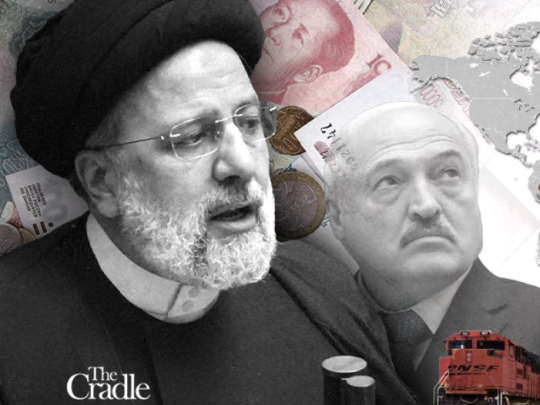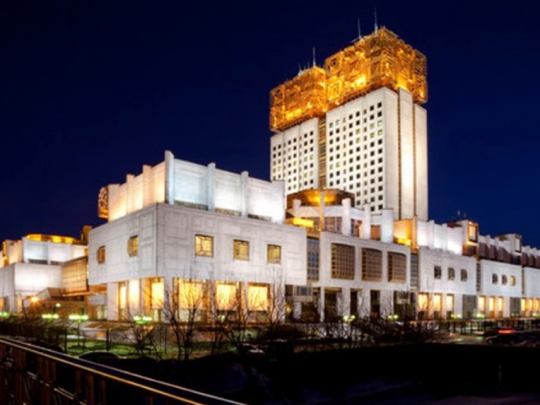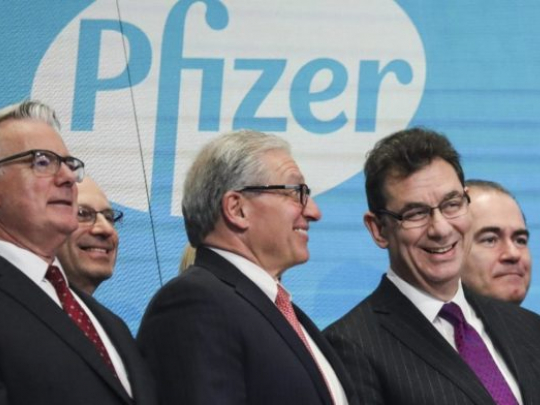1 in 3 Big Defense Contractors Profit from US Prisoner Suffering

America’s largest arms companies are increasingly finding lucrative new ways of profiting from the prison industrial complex; in many cases, weapons of war are directly manufactured using coerced prison labor. A new MintPress News study of the 100 largest private Defense Department contractors found that 37% of them were also profiting from incarcerated Americans, either in prisons and jails, or in Immigration and Customs Enforcement (ICE) camps. This proportion rose to 16 of the top 25 largest arms manufacturers, including Lockheed Martin, Raytheon, General Dynamics and Northrop Grumman. The complete list of top corporations profiting from mass incarceration, displayed in order of value of Department of Defense contracts received, is as follows:
- Lockheed Martin
- Raytheon
- General Dynamics
- Northrop Grumman
- BAE Systems
- L3Harris Technologies
- General Electric
- Health Net Federal Services
- Atlantic Diving Supply
- Leidos Holdings, Inc.
- McKesson Corp.
- Booz Allen Hamilton Holding
- AmerisourceBergen Corp.
- Leonardo S.p.A.
- Textron Inc.
- AECOM
- CACI International
- Jacobs Engineering Group
- Honeywell International
- The Walsh Group Ltd.
- Hensel Phelps Construction Co
- Express Scripts Inc.
- FedEx
- Verizon
- Carahsoft Technology
- Cardinal Health Inc.
- International Business Machines Corp. (IBM)
- Harris Global Communications Inc.
- AT&T
- Microsoft
- Serco Group
- Cisco Systems
- Gilbane Inc.
- CDW Corp.
- GlaxoSmithKline plc
- Centene
- Deloitte
The list (which can be viewed and downloaded here) was created by compiling data from government website USASpending.Gov. The list of the 100 largest private military contractors over the last completed fiscal year was then compared to a database of prison industry private-sector players curated by prison abolition group Worth Rises.
When asked to comment on the fact that almost two-thirds of the biggest players in the defense industry were also waist-deep in the prison profiteering racket, journalist and prison teacher Chris Hedges was far from shocked. “The fabric of the defense industry, the carceral state, the intelligence industry, it is all interwoven. And I think these findings prove it,” he said. Hedges’s most recent book, “Our Class: Trauma and Transformation in an American Prison,” was released in October.
MintPress also spoke with Worth Rises’s founder and executive director, Bianca Tylek, who was similarly unsurprised, stating:
There’s considerable overlap between the two industries, which isn’t shocking; these are controversial industries. Corporations that operate in one controversial industry aren’t afraid to take part in another. Where we see a particular overlap is in security and surveillance technology. In fact, historically, the federal government has awarded grants to test technology being developed for anti-terrorism in prisons and jails.”
Not exactly a cottage industry
One of those “controversial” corporations is Raytheon. In 2011, the Massachusetts-based giant was awarded a contract worth up to $40 million to develop a case-management and communications system for ICE, combining more than a hundred Department of Homeland Security databases into one.
The company, which announced $64.4 billion worth of sales last year, also makes use of America’s vast prison population as a source of almost infinite cheap labor to make some of its most expensive products. Prisoners are coerced into working for as little as 23 cents per hour (minus taxes and other fees) for subcontractors who manufacture parts for Patriot missiles that cost up to $5.9 million apiece, meaning it would take nearly three thousand years of round-the-clock working for a prisoner to be able to afford what they are making.
The U.S. government allows Raytheon and others to sell their products to some of the worst human rights-abusing governments in the world, including Saudi Arabia, Qatar and the United Arab Emirates. Raytheon weapons have been crucial in the Saudi-led Coalition’s bombardment of Yemen, creating what the United Nations calls “the world’s worst humanitarian crisis.” Since the beginning of the war, Raytheon has sold at least $3.3 billion worth of equipment to Riyadh alone. In 2018, the Saudi military used a Raytheon-made laser-guided missile to blow up a school bus full of Yemeni children, killing 51 people. While this story made the news, there are doubtless countless other similar cases like this that never reach Western audiences.
Thus, there exists a situation whereby prisoners earning pennies per hour are making multimillion-dollar weapons fired by individuals being paid barely $20,000 per year at civilians who might not make that much in their lifetimes.
Meanwhile, incarcerated individuals across the U.S. make electronics, harnesses and optical equipment for BAE Systems, including for its Bradley Fighting Vehicle, a mainstay of the U.S. Army. For this work, prisoners reportedly receive around $100 per month.
A number of BAE System subsidiaries – including military and police equipment manufacturer Armor Holdings (which makes the majority of the U.S. Army’s backpacks) and camera, security and spy technology firm Fairchild Imaging – also appear on Worth Rises’ list of corporations that sell to the prison industry. Worth Rises considers BAE Systems, General Dynamics and Lockheed Martin to be among the most egregious corporate profiteers from prison labor, all of them scoring “full marks” on their harm index.
Other big defense contractors moonlight in the prison industry as well. General Electric and its subsidiaries are involved in the construction and equipping of prisons, supplying food and overseeing prison healthcare. Not to be outdone, Booz Allen Hamilton supplies IT and administrative solutions to ICE. And in Louisiana, prisoners on work-release built warships for Northrop Grumman before it closed its Avondale shipyard in 2014.
Perhaps the most important player connecting the prison industry to the military is government-owned corporation Unicor (also known as Federal Prison Industries). Employing more than 16,000 inmates nationwide in 2021, Unicor is a massive enterprise, boasting revenues of over $528 million last year. Making everything from textiles to office equipment and electronics, the company provides a vital service to the military industrial complex, supplying it with a near endless stream of captive and virtually free labor to exploit.
Unicor often acts as a subcontractor for the big arms conglomerates, but is also directly employed by the U.S. government. In the past 12 months, it has secured a number of contracts worth around $100 million with the Army and Air Force to produce all manner of clothing, from trousers to coats to workout outfits, with work being done in its network of factories in more than a dozen states across the country.
While the likes of Raytheon and Lockheed Martin keep their associations with this controversial source of labor quiet, Unicor is proud of its connections, boasting on its website:
Our electro-optical cable assemblies are used in avionic and missile controls, submarine navigation, and tactical observation and targeting systems in fighter jets, helicopters, tanks and other armored vehicles. Our expertise in manufacturing electro-optical assemblies is proven in numerous programs, such as the Bradley eye-safe laser rangefinder and the Patriot missile guidance system.
Other vehicles Unicor notes its products are part of include the F-15 Eagle (Boeing) and F-16 Fighting Falcon (Lockheed Martin) jets and the Cobra (Bell/Textron) helicopter. Unicor also manufactures bulletproof body armor and used to supply the military with combat helmets until a quality-control issue caused a huge recall. Boeing, which is not included on the current list presented above, appears to no longer use prison labor in the construction of its products.
Woke imperialism?
While many of the 37 corporations listed are well known as weapons manufacturers, readers might not associate some of the other names with the arms industry – a fact that highlights the diverse range of services the Department of Defense pays for. CACI International, for instance, is far from a household name, despite the fact that it employs more than 22,000 people worldwide. CACI’s primary client is the U.S. government, for whom it provides a wide array of IT and professional services. Situated in the part of northern Virginia colloquially known as “Raytheon Acres,” it is one of the many companies collectively feasting from the trough of Iraq and Afghanistan war contracts.
CACI markets itself as a progressive employer. Its website is rife with talk of diversity and inclusiveness, claiming:
CACI values everyone’s unique contributions that they bring to our company, and to our customers — every day. A diverse workforce fosters innovative thinking. It improves our potential for recruiting and retaining highly qualified employees, and it makes us a more attractive business partner.
It also boasts that it is on the Forbes list of top female-friendly companies. However, this progressiveness stops cold when money is on the line. In 2016, CACI bid for and won a $93 million contract with ICE to maintain its detention centers – buildings that have been widely described as concentration camps. According to its then-CEO, Ken Asbury, “CACI is committed to supporting our federal law enforcement officers and first responders protecting the nation.”
Last year, Asbury’s successor John Mengucci bemoaned President Joe Biden’s Afghanistan withdrawal as bad for business. He was right: in 2019, CACI secured a $907 million contract over 5 years to “provid[e] intelligence operations and analytic support” to U.S. forces in Afghanistan, although with the withdrawal, that particular gravy train appears to have run dry.
In 2004, a group of 256 Iraqis sued CACI for its alleged involvement in their torture and sexual assault at the notorious Abu Ghraib prison. Last year, the Supreme Court rejected CACI’s appeal, bringing them a step closer to facing consequences for their actions.
Chips away!
Some readers might be surprised to see tech companies such as Verizon, IBM, AT&T and Microsoft among the largest defense contractors. However, in a high-tech, 21st century environment, the military requires a wide range of technology and, considering the high premiums it usually pays, it is fast becoming a highly lucrative market to tap. As the former supreme allied commander of NATO, Admiral James Stavridis, said in 2019, in the next 10 years, the military would be vastly more focused on cyberwarfare, with a priority on offensive cyber capability and unmanned land vehicles and drones, all of which require the services of Silicon Valley.
In November, the Pentagon solicited bids from Amazon Web Services, Microsoft, Google and Oracle for its multibillion dollar Joint Warfighting Cloud Capability program. Last April, Microsoft also secured a gigantic $22 billion contract to supply the Army with more than 120,000 bespoke augmented-reality headsets, meant for use in both training and battlefield scenarios.
For many years, Silicon Valley has closely collaborated with the national security state. In 2020, Microsoft, Google, Oracle, IBM, and Amazon Web Services signed a partnership with the CIA to provide the agency with cloud computing services. The deal was reportedly worth tens of billions of dollars. Likewise, big tech has found collaborating with the prison industry to be highly profitable. Google, Amazon and Microsoft have all provided their services and experience to ICE, helping the agency streamline its operations to find and deport as many people as possible. In all three cases, this has caused a major backlash, including from their own staff.
The gulag and the gig economy
Prison conditions in the United States are among the worst in the developed world. Although most states require prisoners to be financially compensated for their labor, wages can be garnished to pay for child support, victim restitution and even room and board. And in five states – Texas, Arkansas, Alabama, Georgia and Florida – prisoners are required to work without any pay whatsoever. “This is bonded labor; it can’t organize; it can’t strike; it can’t protest its working conditions. Pay is far below the minimum wage,” Hedges told MintPress. Thus the massive prison population serves the needs of corporate America in two ways: first, it provides a gigantic pool of cheap, disciplined labor to exploit, helping them compete with sweatshops in Asia; and second, it acts as a disciplining tool against free labor, helping to bust unions and drive down wages and working conditions across the country. As Hedges said:
Figures like Dostoyevsky understood that if you want to understand the beating heart of any country, you have to look at its prison population because those who are trapped in the prison system are, in essence, the model workers for the corporate state. That is what they want all of us to become. And in the gig economy, we are moving in that direction.”
Worth Rises is among a number of groups that consider some prison labor to be akin to slavery, and it has campaigned to change the Thirteenth Amendment, which allows slavery to be used as a form of punishment for a crime.
As the economy has been hollowed out and jobs shipped overseas, much of the country’s working-class population has become, in corporate America’s eyes, surplus to economic requirements. They are no longer needed to work in factories and are effectively useless in generating profits for others. Hedges sees the rise of the prison industrial complex as a response to this. As he noted:
Bodies on the streets of Detroit or Newark or East New York are not worth anything in the eyes of the corporate state. But if you lock them in a cage, they have the capacity to generate fifty or sixty thousand dollars per year for these corporations. So in that sense, it is a complete continuum [since slavery].”
With almost 2.3 million people behind bars across a network of more than 7,000 facilities, the United States has by far the highest incarceration rate in the world, locking its citizens up at over 10 times the rate of European countries like Denmark or Sweden, and over 17 times that of Japan. Nearly $4.6 billion is spent every year on the construction of new facilities. The U.S. spends far more on its carceral state than any other country, with its prison population accounting for almost a quarter of the incarcerated people worldwide. A vast array of products, from baseball caps to Ikea furniture to McDonald’s uniforms to Victoria’s Secret lingerie has been made by incarcerated individuals. This profit-driven relationship between the U.S. government and corporate America when it comes to incarcerating millions is what sociologists mean when they refer to the “prison industrial complex.”
The U.S. prison population explosion closely mirrors the rise of neoliberalism as the dominant ideology. Before the Reagan administration, American prison figures were comparable to those in Europe. However, between 1984 and 2005, a new prison or jail was built, on average, every 8.5 days, to the point where it peaked in 2009. Worth Rises’s Tylek strongly criticized the cost and waste of the endeavor. “In many places, prison and jail populations have fallen over the past few years. And yet the budgets of those agencies continue to increase. Nothing justifies that,” she said.
The off-the-charts prison industry has become so normalized that it is the subject of light entertainment. In 2020, a new game called “Prison Empire Tycoon” went viral, becoming the number one strategy game in Apple’s App Store. The point of the game was to oversee and run a for-profit prison. During the tutorial at the start of the game, a baton-wielding guard instructs players, telling them that “the state pays us good money” to manage the “lowlifes” they send your way. “It’s a perfect business,” he says, as he shows you how to send people to solitary confinement, something that is near-universally described as torture. Few people apparently took any issue with it, with the game garnering positive reviews.
Paying their debt?
One way of generating more profit in both the game and in reality is to shift costs onto the prisoners themselves. Incarcerated people now regularly have to pay for essentials like soap, toothpaste and shampoo as well as phone calls with loved ones. Others require medical co-pays to see a doctor or for room and boarding costs, to be garnished from earned wages.
Often just being sent to a correctional facility incurs a $100 “processing fee” prisoners must pay, while visitors are regularly charged for background checks. Prisoners’ friends and families transfer $1.8 billion into correctional facilities every year. Faced with no other choices, they are forced to accept money transfer fees up to 45%. Financial corporations like JPay and JP Morgan Chase partner with correctional facilities in order to ensure the best deal for them – and the worst deal for the prisoners. As Tylek told MintPress, “Being incarcerated is very expensive. It is so expensive that it drives many families that are supporting people who are incarcerated into debt.”
Hedges, who has spent a great deal of time teaching in the New Jersey penitentiary system, also noted the similarities between prisons and the military, commenting that guards are often recruited from the military or National Guard. Increasingly, guards resemble swat teams, and are equipped with high-tech lethal weaponry. “Everything is militarized,” he said, adding:
You are referred to by your number, not your name. You are forced to walk in a single file down the halls. Any infraction or [slight perceived] by a corrections officer can see you end up being beaten or thrown into solitary confinement and stripped of what few privileges you have. It is the perfect microcosm of the totalitarian state.”
Read More :
Bringing the wars home
To an even greater extent than prisons, policing has become increasingly militarized. Since 1997, the Department of Defense has transferred more than $7.2 billion worth of military equipment to law enforcement agencies. Today, it is not uncommon for police departments to possess high-powered assault rifles, tanks and helicopters. In the wake of the uprising in Ferguson, Missouri, President Barack Obama restricted the flow of surplus military equipment. However, once in office, Donald Trump quickly reversed the decision.
A 2017 study found that the receipt of military equipment by law enforcement agencies led to an increase in fatal shootings by police. Even when controlling for other variables, counties with the most equipment received were found to record more than double the police killings of counties that received nothing. When all you have is a hammer, the saying goes, everything begins to resemble a nail.
“In many cases, the government is reacting to domestic crime in the way it responds to international war. And this is driven by the fact that many of the same vendors are providing the equipment and technology for both these environments,” Tylek said.
As empires decline, Hedges has argued, they often bring the repression they mete out abroad back with them, using on the domestic population tactics honed through quelling foreign dissent. Today, poor communities across the U.S. are beginning to be governed in an increasingly militarized way, while those oppressed by a prison industrial complex at home are coerced into providing their labor to bolster the military industrial complex abroad. And at every step, corporate America continues to profit.
- Source : Alan MacLeod - Mintpress News


















